Going back to the “old world” requires looking at everything we don’t have at this side of the pond. The first thing that jumps into view is nature.
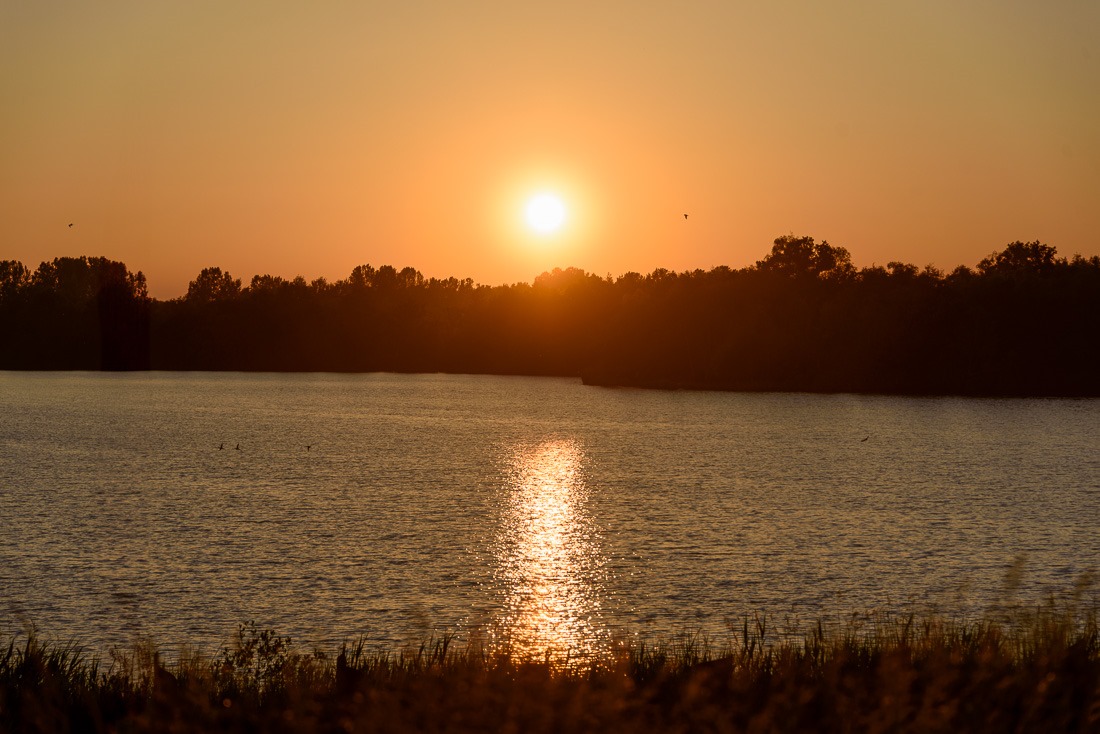
When you go to The Netherlands, you imagine a tiny country, it’s only twice as big as Lake Winnipeg after all, full of people and cities with no place to relax.
While the “full of people” is kind of true, there is still plenty of nature left. Those areas are now mostly protected and cannot be converted to farmland or city space.
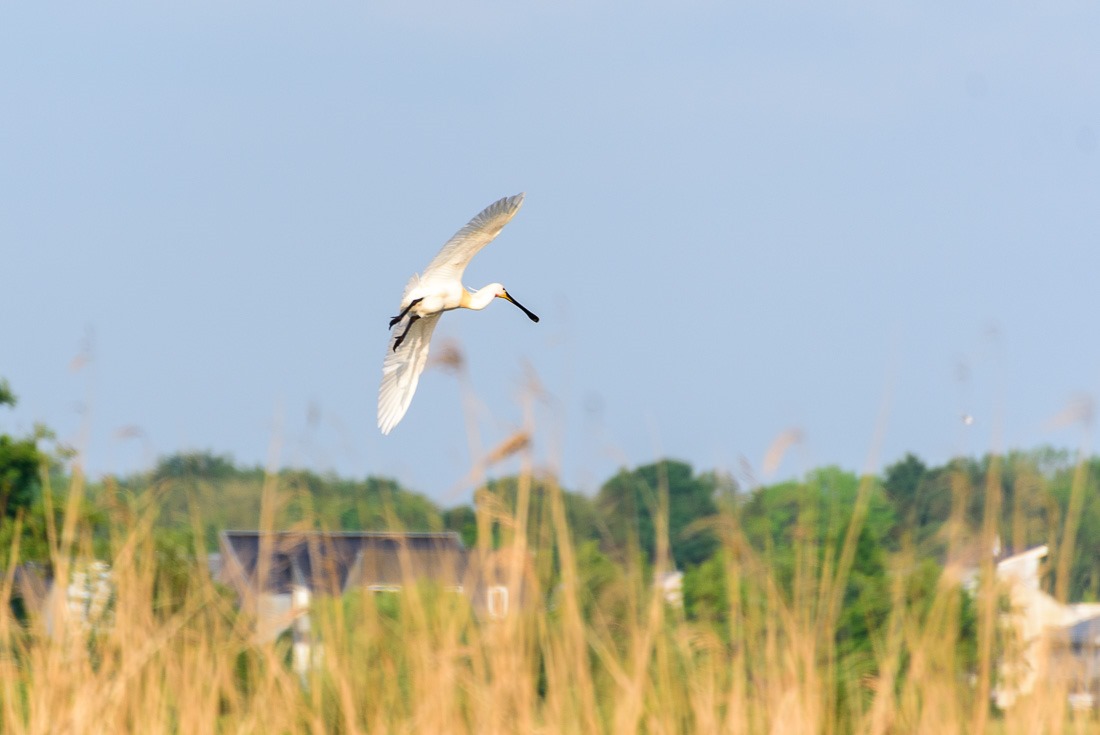
Spoonbill
The opposite even happens, although with a helping hand from Mother Nature. The “Onlanden” close by the city of Groningen, was converted to farmland a long time ago. It was initially “just” wetlands. When the farmland was in use, the city and surrounding areas had a constant problem with water, mosquitoes and flooding.
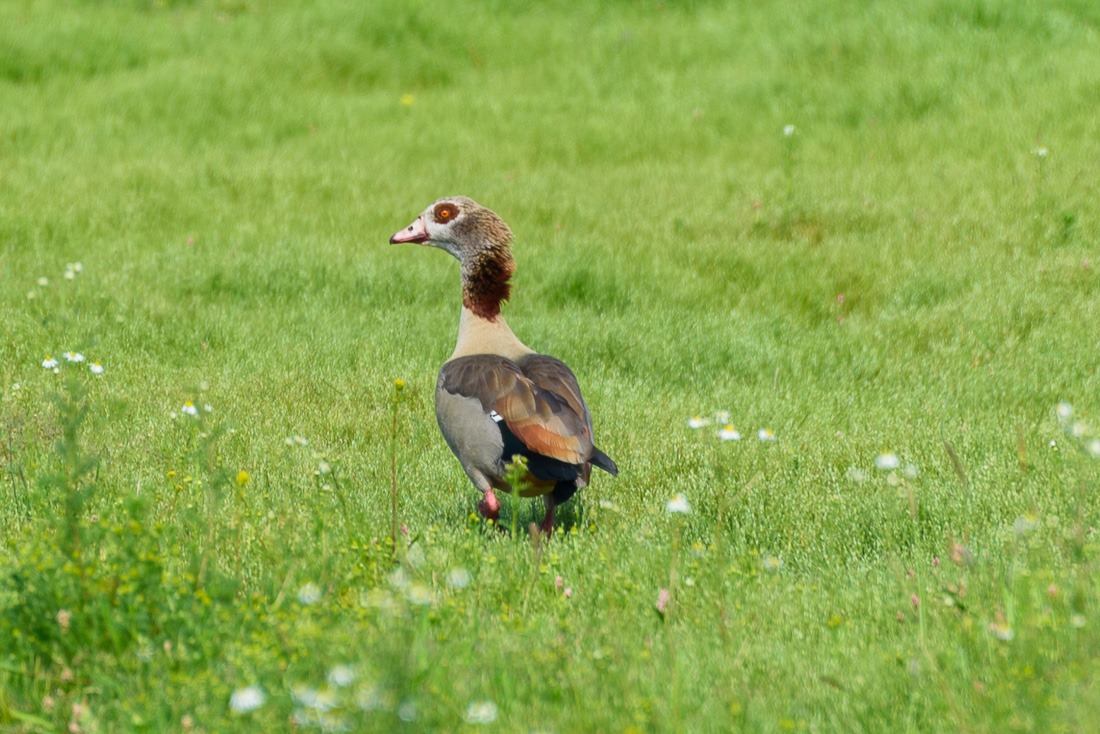
Egyptian Goose
Not very long ago, the decision was made to leave the farmland alone and let it go wild again, turning it back into wetlands. I guess a few areas were dug out to provide for lakes and such, but that is not important. As soon as nature had its wetlands back, flooding was a thing of the past again.

See-through moment
Also, wildlife came back in great numbers. Today it is a well-loved area for hikers and bikers (the ones without assisted wheels, only the huff-n-puff engines are allowed). It is also “heaven” for photographers and sound recordists. I only had my camera with me for this occasion, though.
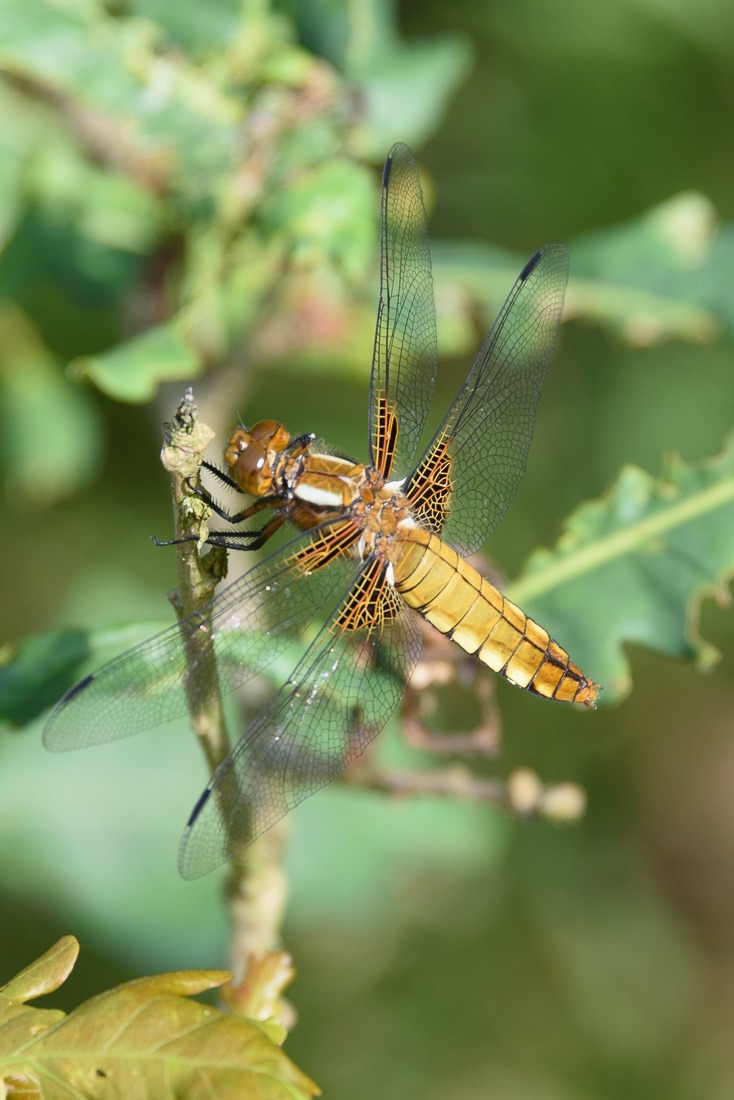
Broad-bodied Chaser
Walking through “old nature” in The Netherlands is different from the lands we have in North America. The atmosphere is quite different. In many cases, the natural landscape has been used in some form in the past. Farming was small scale in those days, and lots of small farms were out there. Once they were no longer in use, often the land was bought back by the province to become a nature reserve again.

Banded demoiselle
We’re talking of farms of 100 or more years ago. As a result, you have trails and paths that, if required, can still be accessed by vehicles, but are closed to traffic at all times. You can walk in a quiet environment. And you can walk a LOT. I am not a hiker by any stretch, but I must have walked a lot of kilometers in the short time I was there.
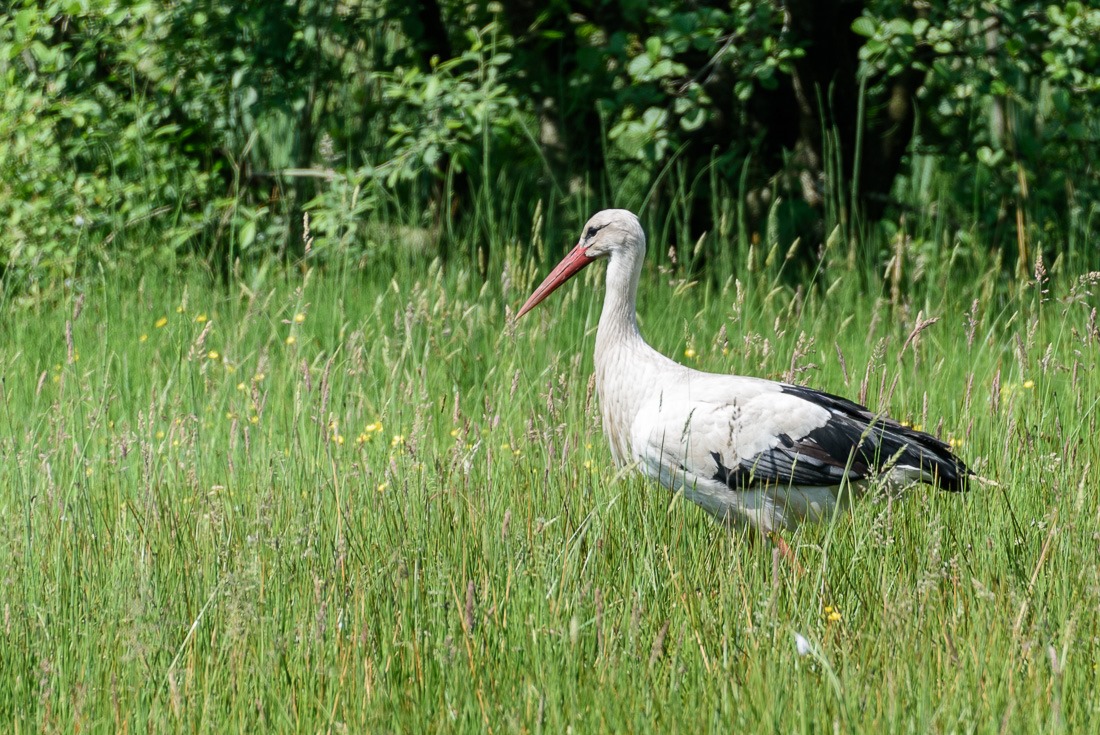
Stork, making a comeback in the country
Each of those kilometers with pleasure, I should add. Encounters with wildlife and domesticated life were plentiful. This is something one doesn’t get to experience in vehicle-oriented North America.
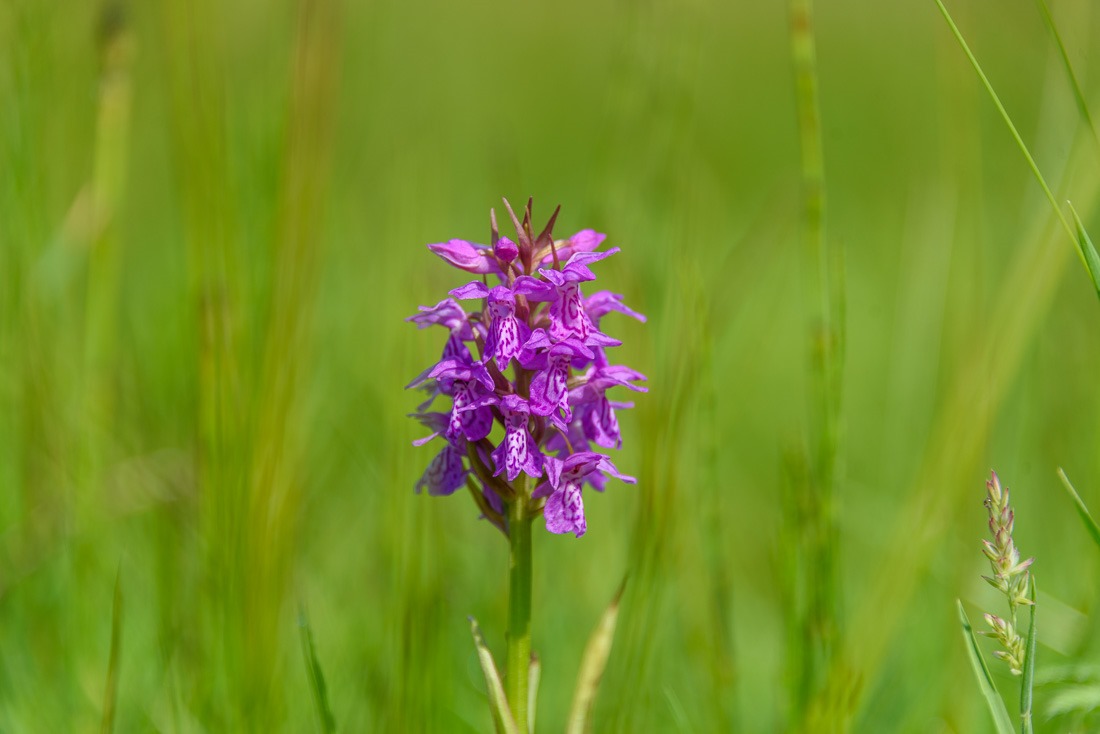
Broad-leaved Marsh Orchid
As an added bonus, centuries-old farms, now converted to restaurants and old-fashioned cafes offer all the refreshments you need after a long hike.
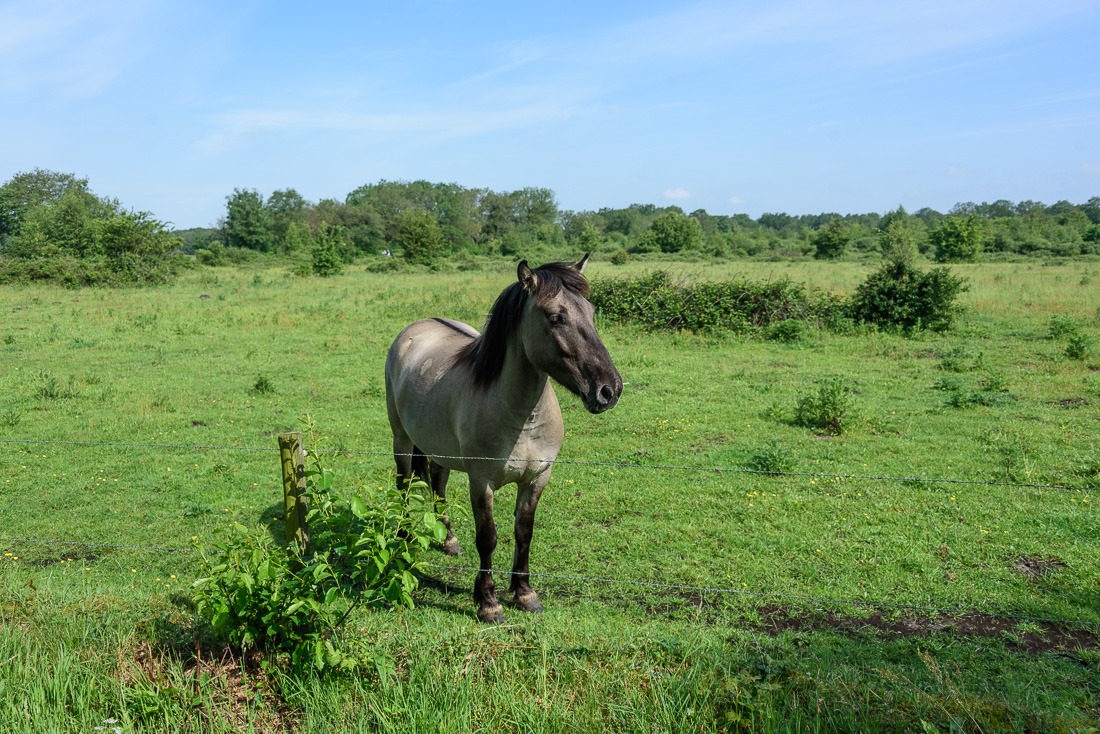
Friendly and curious
All these pleasures can be had in a pocket-sized area, compared to the lands we cover in North America. And yes, the farms that still operate in the area operate with modern equipment to make sure that the old landscape is preserved. Horses and cows may be fenced in, but hiking paths cross the same lands.

Pasture, tread with care
The odd sign saying “beware of the bull” should be enough to make you… aware. No way that a bull would be restrained in a wide open field, just because some hiker wants to pass (perhaps). Up to the intruders to be aware.
Going back to the old country is refreshing sometimes. In a small area one can encounter a lot of different landscapes and ways of living. Worth remembering when going back to North America that we consider the center of the world nowadays…
Until next time…
